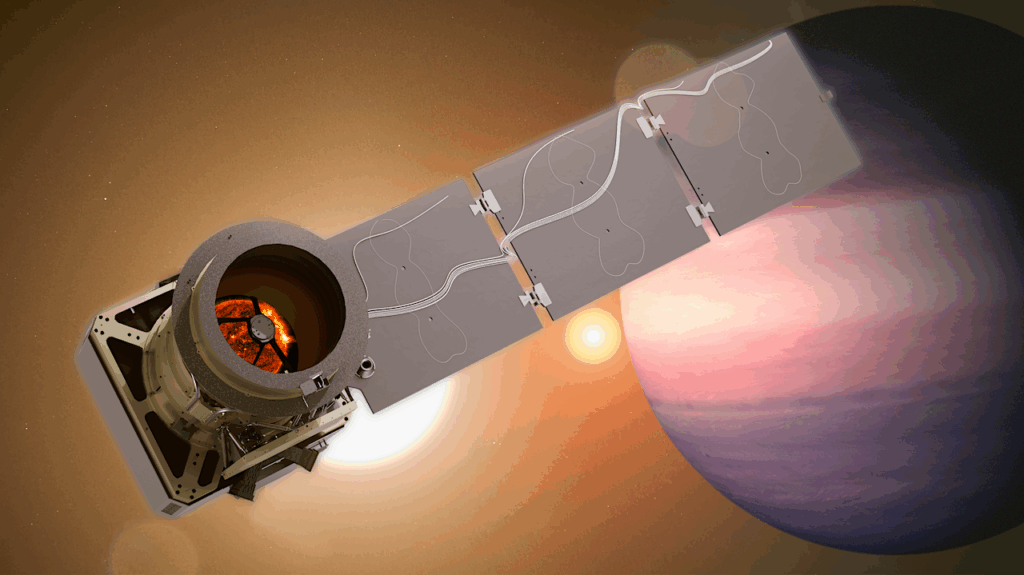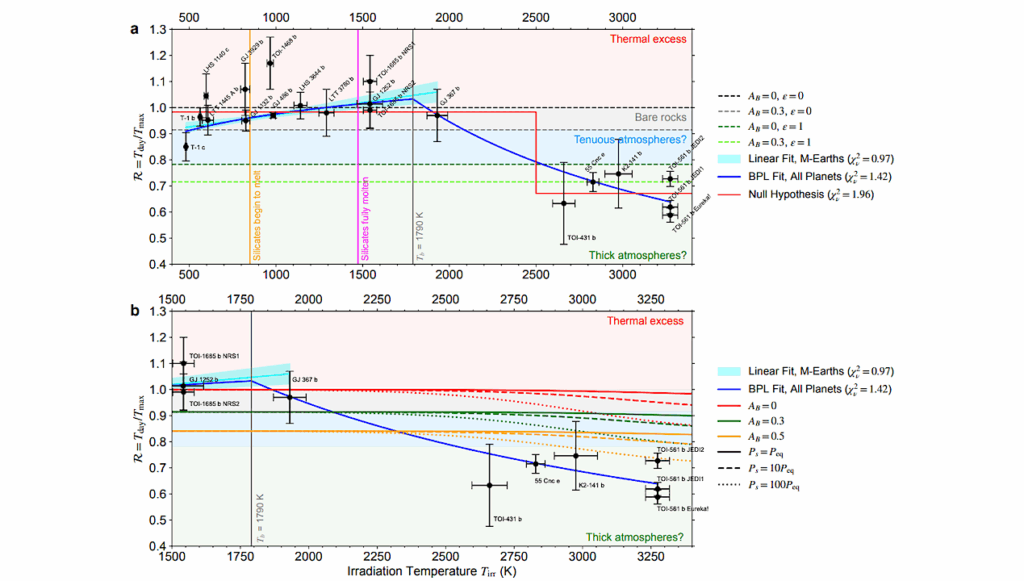Prebiosignature Molecules Can Be Detected In Temperate Exoplanet Atmospheres With JWST

The search for biosignatures on exoplanets connects the fields of biology and biochemistry to astronomical observation, with the hope that we might detect evidence of active biological processes on worlds outside the solar system.
Here we focus on a complementary aspect of exoplanet characterisation connecting astronomy to prebiotic chemistry: the search for molecules associated with the origin of life, prebiosignatures. Prebiosignature surveys in planetary atmospheres offer the potential to both constrain the ubiquity of life in the galaxy and provide important tests of current prebiotic syntheses outside of the laboratory setting.
Here, we quantify the minimum abundance of identified prebiosignature molecules that would be required for detection by transmission spectroscopy using JWST.
We consider prebiosignatures on five classes of terrestrial planet: an ocean planet, a volcanic planet, a post-impact planet, a super-Earth, and an early Earth analogue. Using a novel modelling and detection test pipeline, with simulated JWST noise, we find the detection thresholds of hydrogen cyanide (HCN), hydrogen sulfide (H2S), cyanoacetylene (HC3N), ammonia (NH3), methane (CH4), acetylene (C2H2), sulfur dioxide (SO2), nitric oxide (NO), formaldehyde (CH2O), and carbon monoxide (CO) in a variety of low mean molecular weight (<5) atmospheres.
We test the dependence of these detection thresholds on M dwarf target star and the number of observed transits, finding that a modest number of transits (1-10) are required to detect prebiosignatures in numerous candidate planets, including TRAPPIST-1e with a high mean molecular weight atmosphere. We find that the NIRSpec G395M/H instrument is best suited for detecting most prebiosignatures.
Alastair Claringbold, Paul Rimmer, Sarah Rugheimer, Oliver Shorttle
Comments: 28 pages, 12 figures, accepted for publication in AJ
Subjects: Earth and Planetary Astrophysics (astro-ph.EP)
Cite as: arXiv:2306.02897 [astro-ph.EP] (or arXiv:2306.02897v1 [astro-ph.EP] for this version)
Submission history
From: Alastair Claringbold
[v1] Mon, 5 Jun 2023 14:05:07 UTC (5,257 KB)
https://arxiv.org/abs/2306.02897
Astrobiology, Astrochemistry








